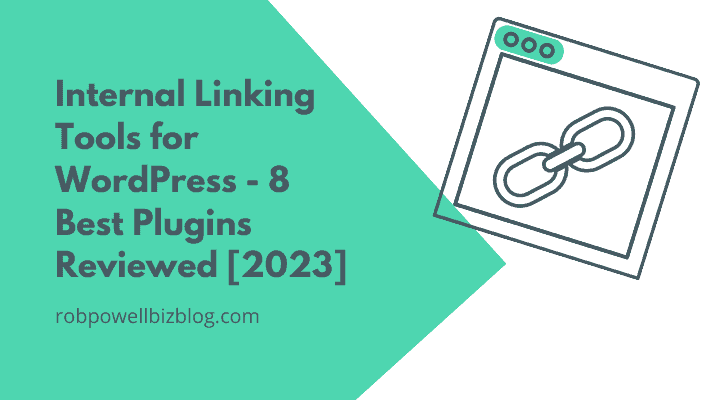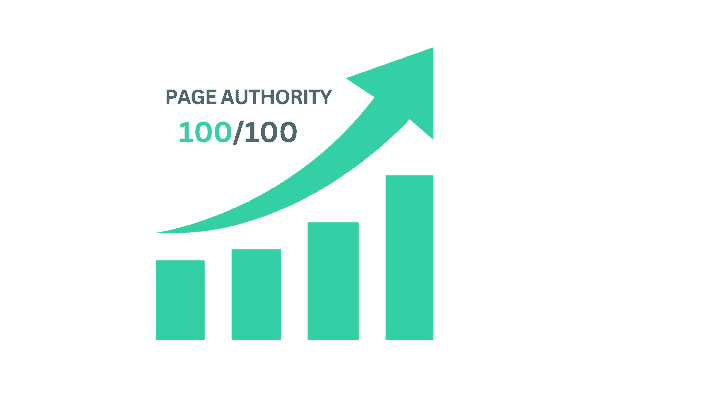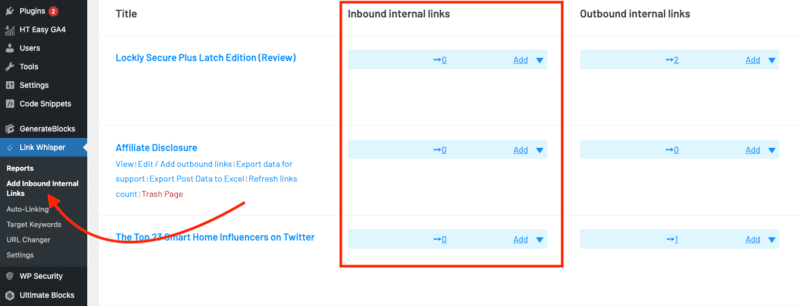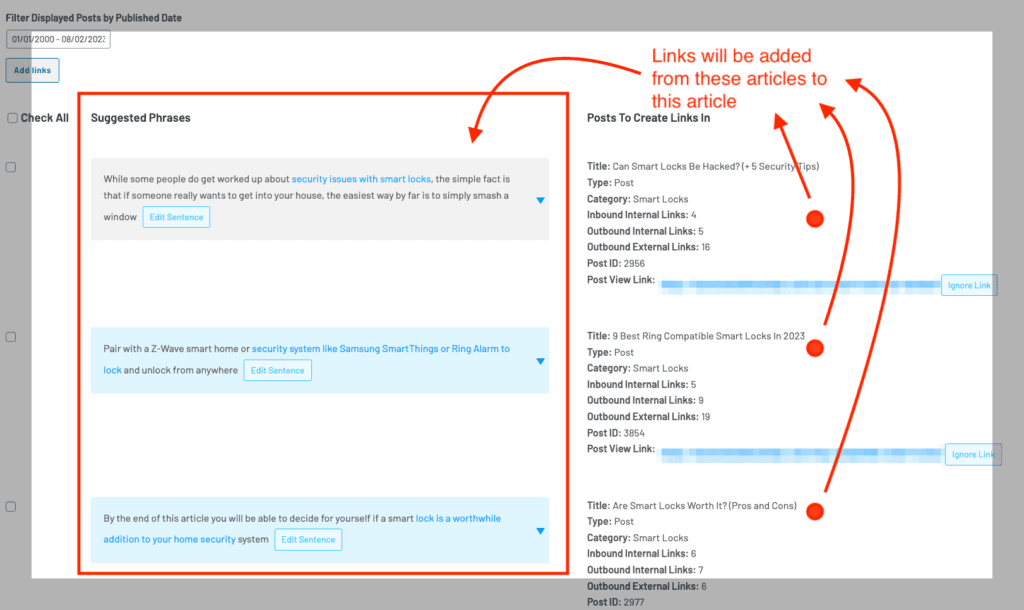We all know the importance of a well-structured website and a killer SEO strategy, but one piece of the puzzle often goes under the radar: Internal Linking.
You see, internal linking is the secret sauce that binds your website together, guiding users and search engines alike through the intricate web of your content. But here’s the thing – it’s not just about throwing in a few random links and calling it a day. We’re talking about smart, strategic, and purpose-driven linking that can take your WordPress website from merely existing to utterly dominating the search engine rankings.
In this article, we’re going on a thrilling adventure to explore the world of internal linking tools for WordPress. Say goodbye to tedious manual linking and hello to time-saving, result-boosting tools that will elevate your SEO game to the next level.

Whether you’re a solopreneur, a blogger, or a digital marketer, these powerful tools will become your trusty companions on your journey to SEO greatness. They’ll help you analyze, optimize, and fine-tune your internal link structure like a seasoned pro – no technical wizardry required.
But that’s not all! A well-structured internal linking strategy isn’t just about impressing search engines; it’s about delivering an outstanding user experience. And guess what? These tools will ensure your visitors find exactly what they’re looking for, keeping them hooked and engaged on your website for longer.
So, if you’re ready to harness the true power of internal linking and unleash the full potential of your WordPress website, join me on this exhilarating quest. We’re diving headfirst into the world of cutting-edge linking tools. And trust me, your SEO game will never be the same again. Let’s get started!
The Importance of Internal Linking in SEO
Internal linking is an important aspect of search engine optimization (SEO) that is often overlooked. It is an essential aspect of SEO that can help boost a website’s visibility and improve its ranking on search engine result pages.
Internal links are hyperlinks that connect one page of a website to another page on the same site. These links are crucial in helping search engines understand the structure of a website and the relationship between its different pages.
Improving User Experience
One of the main benefits of internal linking is that it helps improve the user experience. By providing links to related content, users can easily navigate your website and find the information they need. This can help reduce bounce rates and increase the time users spend on your site, which can positively impact your search engine rankings.

Boosting Page Authority
Another benefit of internal linking is that it helps distribute link equity throughout a website. Link equity, or link juice, is the value that search engines assign to a page based on the number and quality of links pointing to it.
By linking to important pages within a website, internal linking can help distribute this link equity and improve the site’s overall authority. You can also boost the authority of an individual page on your website by linking to that page from another page with an external link pointing to it.
Enhancing Site Architecture
Internal linking can also help enhance the overall architecture of your website. By linking related pages together, you can create a clear hierarchy of content that search engines can easily understand. This can help improve the indexing and ranking of your website and make it easier for users to navigate and find the information they need.
Internal linking is an essential aspect of SEO that can help improve user experience, boost page authority, and enhance site architecture. Using internal links strategically can improve your website’s visibility and ranking on search engine result pages.
Internal Linking Best Practices
Internal linking can enhance navigation, distribute link equity, and establish a coherent information hierarchy when done correctly. Here are some best practices for effective internal linking:
1. Use Descriptive Anchor Text: When creating internal links, use descriptive and relevant anchor text. The anchor text should give users a clear idea of what they will find when they click the link. Avoid using generic phrases like “click here” or “read more,” as they don’t provide much context to search engines or users.
2. Prioritize Relevance: Link to pages that are contextually relevant to the content where the link is placed. The linked pages should offer additional value to readers and be related to the discussed topic. This helps search engines understand the content’s topic and establishes a semantic relationship between pages.
3. Focus on User Experience: Ensure that your internal links benefit users, aiding them in finding relevant and related content. Avoid excessive linking, as it can be distracting and overwhelming for visitors. A well-structured internal linking system enhances user navigation and keeps them engaged on your website.
4. Optimize Link Placement: Position internal links strategically within the content, such as within the body text, rather than just the navigation menu or footer. Contextual links carry more weight and provide better SEO value. Additionally, prioritize linking from high-authority pages to pages that require a ranking boost.
5. Maintain a Logical Site Structure: Organize your website’s content into a clear and logical hierarchy. Use categories, tags, and subfolders to create a structured architecture that facilitates both user navigation and search engine crawling. A well-organized site structure ensures that link authority is distributed effectively across the website.
6. Fix Broken Links: Regularly audit your website for broken internal links and fix them promptly. Broken links create a poor user experience and can negatively impact your site’s SEO performance. Utilize tools that help identify broken links and redirect or update them as needed.
7. Limit the Use of Nofollow Tags: Generally, it’s best to avoid using the “nofollow” attribute on internal links unless there’s a specific reason. Allowing search engines to follow internal links helps distribute link equity across your site and aids in better indexation.
8. Monitor Internal Link Performance: Use web analytics tools to track the performance of internal links. Analyze which links receive the most clicks and which pages have high bounce rates, and identify opportunities to improve the linking strategy to enhance user engagement and conversion rates.
By implementing these internal linking best practices, you can create a user-friendly website with a strong information architecture, improved search engine visibility, and a seamless browsing experience for your visitors.
Best Internal Linking Tools for WordPress
#1. Yoast SEO
Yoast SEO is a popular and powerful WordPress plugin that offers a wide range of features to help improve your site’s search engine optimization (SEO). One of the key features of Yoast SEO is its internal linking suggestions, which are based on content analysis and keyword focus. This helps you to improve your site’s structure and optimize internal linking for better SEO.
When creating or editing a page or blog post, the plugin analyzes the content and suggests relevant internal links to other pages or posts on the same website. These internal links connect different parts of the website, helping search engine crawlers understand the site’s structure and hierarchy.
Pros and Cons of Yoast SEO Internal Linking
Pros
- Offers internal linking suggestions based on content analysis and keyword focus
- Helps improve site structure and optimize internal linking for better SEO
- Analyzes content and suggests relevant internal links to other pages or posts on the same website
- Connects different parts of the website, helping search engine crawlers understand the site’s structure and hierarchy
Cons
- The free version of the plugin has limited features
- It can be overwhelming for beginners due to the wide range of features
- Some users have reported issues with the suggestions being irrelevant or not useful
- Some users have reported that the suggestions can be repetitive or suggest the same pages repeatedly
Yoast Pricing
Yoast has a free version and a paid version, but to get the internal linking features, you will need the paid version:
- USD$99 per year
#2. Rank Math
Rank Math is a WordPress plugin that offers a variety of features to help optimize a website’s search engine optimization (SEO). It provides internal linking recommendations to improve a site’s SEO and offers several other features for on-page optimization and content analysis.
Rank Math has a link suggestion feature that shows relevant posts or pages to link to based on the content and lets users manage their link attributes and open graph settings. It is a comprehensive SEO plugin that helps improve a website’s SEO performance.
Pros and Cons of Rank Math Internal Linking
Pros
- Provides internal linking recommendations to improve a site’s SEO
- Offers several other features for on-page optimization and content analysis
- Shows relevant posts or pages to link to based on the content
- Lets users manage their link attributes and open graph settings
- Comprehensive SEO plugin that helps improve a website’s SEO performance
Cons
- Some users have reported issues with the accuracy of the internal linking suggestions
- It can be overwhelming for beginners due to the wide range of features
- Some users have reported issues with the plugin conflicting with other WordPress plugins and themes
- The free version of the plugin has limited features
RankMath pricing
RankMath has three paid options (it no longer has a free version):
- Pro: USD$59 (renews at $69 per year)
- Business: USD$199
- Agency: USD$499
#3. LinkWhisper
LinkWhisper is a WordPress plugin designed to enhance internal linking by suggesting relevant internal links as you write content. In my opinion this is the best of all the internal linking tools for WordPress, and I use it on all my websites. Using artificial intelligence, the plugin saves you time and ensures that your internal linking strategy is effective.
The plugin analyzes your content and suggests internal links that are related to the keywords and phrases used in your content. It also identifies orphaned pages and suggests internal links to improve the overall structure of your website.
When it comes to internal linking, there are two linking issues you need to be aware of: articles that don’t have enough outgoing internal links and articles that don’t have enough incoming internal links.
This second linking issue is absolutely vital for good SEO. But it’s very hard to know which of your articles have insufficient incoming internal links. Unless, of course, you have a plugin like LinkWhisper.
Because this is something LinkWhisper does really well. Just click on the ‘Add Inbound Internal Links’ button, and LinkWhisper shows you all the articles that don’t have any incoming internal links:

Click on the ‘Add’ button, and you can then choose which articles you want to link to your target article:

I really like this about LinkWhisper – the ability of the plugin to find ‘orphan’ articles on your site that don’t have any links pointing to them and then suggest relevant articles that could link to that article.
Pros and Cons of LinkWhisper Internal Linking
Pros
- Reports on the status of internal links (outgoing and incoming) across all your posts
- Gives you link suggestions while writing, using AI
- Provides internal linking recommendations to improve a site’s SEO
- Assign keywords to links
- Shows relevant posts or pages to link to based on the content
- Lets users manage their link attributes and open graph tags
- Detailed ‘click tracking’ (monitors all links on the front end of your site and records each time a user clicks on a link)
- Identifies orphaned pages and suggests internal links to improve the overall structure of the website
- Diversify your anchor texts
Cons
- A certain percentage of the internal linking suggestions will be not relevant
- It can be overwhelming for beginners due to the wide range of features
- Some users have reported issues with the plugin conflicting with other WordPress plugins and themes
LinkWhisper Pricing
LinkWhisper offers three paid options:
- 1 Site License: USD$77 per year
- 3 Site License: USD$117 per year
- 10 Site License: USD$167 per year
#4. Internal Link Juicer
Internal Link Juicer is a WordPress plugin designed to enhance internal linking on WordPress sites.
The plugin automatically analyzes your content and suggests relevant internal links to boost SEO. The plugin provides a variety of features that allow you to control the frequency, placement, and style of your internal links.
It ensures that your internal linking strategy is effective and helps improve the overall structure of your website. Internal Link Juicer is user-friendly, easy to implement, and compatible with various WordPress themes and plugins.
Pros and Cons of Internal Link Juicer Internal Linking
Pros:
- It saves time by automatically adding internal links to your content.
- It helps improve your website’s SEO by adding internal links to your most important content.
- Diversify your anchor texts with the intelligent gap feature
- The plugin’s link index ensures loading times for your WordPress site stay fast
- It enhances the user experience on your website by making it easier for visitors to find relevant content.
- Clever reporting – discover pages with few links
- It can help improve engagement metrics like bounce rate and time on site.
Cons:
- It may not be suitable for all websites.
- A certain percentage of the internal linking suggestions will not be relevant
- It may not be compatible with all WordPress themes.
Internal Link Juicer Pricing
Internal Link Juicer has free and paid versions. The free version automatically builds internal links on posts and pages, but the paid version builds links on posts, pages, terms, and custom fields.
The paid version also includes these added features:
- Only link posts within the same category
- Consider manually linked targets
- Exclude parts of text from linking
Paid version: USD$69.99 per year
#5. SEOPress
SEOPress is a comprehensive SEO plugin for WordPress that includes various features to improve your website’s SEO performance. The plugin’s internal linking is a feature that allows you to easily add relevant links to your WordPress posts and pages.
These internal linking suggestions are based on content analysis and can enhance your internal linking strategy.
The plugin’s link manager shows you the health and performance of your internal links, allowing you to easily add and edit them.
Pros and Cons of SEOPress Internal Linking
Pros
- Comprehensive SEO plugin that includes a range of features to improve your website’s SEO performance
- SEOPress internal linking feature is easy to use and can help you improve your website’s SEO.
- Allows for full nofollow management.
- Includes “smart linking” (automatically adds a designated URL to your specified keyword in each post that you make) and a smart link manager.
- SEOPress Insights tracks your keyword positions in Google and monitors your backlinks automatically.
- The plugin’s link manager shows you the health and performance of your internal links, allowing you to easily add and edit them
- Uses the TF-IDF (Term Frequency – Inverse Document Frequency) statistical weighting method to calculate the importance of a keyword within your document compared to all of your other articles
- Suggests up to 5 internal links per post from your SEO meta box, and you can copy, preview, or edit them in one click
- Lightweight and does not slow down your website
Cons
- Some users have reported issues with the accuracy of the internal linking suggestions
- It may not be as effective as other internal linking tools in terms of providing suggestions and analysis
- It may not be compatible with all WordPress themes
SEOPress Pricing
SEOPress has three pricing points:
- SEOPress Pro: USD$49
- SEOPress Insights: USD$99
- SEOPress Bundle: USD$128
However, only the top two options ($99 and $128) include the internal linking function.
#6. Interlinks Manager
Interlinks Manager is a WordPress plugin that helps you manage internal links on your website. It provides a simple interface for adding and editing internal links and allows you to customize your link attributes.
This plugin also helps you manage your link structure by providing a report on the health and performance of your internal links. Interlinks Manager is user-friendly and easy to implement, making it a great option for optimizing your internal linking strategy.
Pros and Cons of Interlinks Manager Internal Linking
Pros:
- Provides a simple interface for adding and editing internal links
- Allows you to customize your link attributes
- Generates internal links suggestions based on your content and gives you relevant and natural internal links ideas
- Creates auto internal links based on specified keywords or phrases
- Tracks the internal links and shows you the visits generated by each link
- Exports the internal links data and the link juice data to CSV format for further analysis
- Analyzes all the internal links on your WordPress website and shows you the number, status, and performance of each link
- Calculates the link juice for each URL on your website and shows you how to improve the distribution of authority and relevance
Cons:
- Some users have reported issues with the relevance of the internal linking suggestions
- It may not be compatible with all WordPress themes
Interlinks Manager Pricing
Interlinks Manager has two pricing tiers. The extended license allows you to use the plugin in an end product that you charge for:
- Regular License: USD$39
- Extended License: USD$195
#7. All-in-One SEO (AIOSEO)
All-in-One SEO (AIOSEO) is a beginner-friendly WordPress plugin that helps you improve your SEO without any coding knowledge. It includes an internal linking tool called Link Assistant that scans your content, identifies relevant link opportunities, and seamlessly adds internal links saving you time.
The Link Assistant has a ‘Linking Opportunities’ filter, which content which could be improved by adding links suggested by Link Assistant.
The tool also identifies ‘orphan posts’ (articles with no internal links pointing to them) and suggests ways to link to those articles from elsewhere on your website.
Pros and Cons of Link Assistant in All-In-One-SEO
Pros:
- Scans your content, identifies relevant link opportunities, and seamlessly adds internal links saving you time
- Identifies orphan posts and suggests ways to link to those articles from elsewhere on your website
- Has a beginner-friendly interface
- All-in-One SEO offers a wide range of features to improve your website’s SEO
- The Linking Opportunities filter identifies content that could be improved by adding links suggested by Link Assistant
Cons:
- Some users have reported issues with the relevance of the internal linking suggestions
- It may not be as effective as manual internal linking for advanced users who have a deeper understanding of their website’s content and structure
All-In-One-SEO Pricing
All-In-One SEO has four price tiers. However, only the top two tiers (Pro and Elite) include the Link Assistant:
- Basic: USD$49.60 per year
- Plus: USD$99.60 per year
- Pro: USD$174.65 per year
- Elite: USD$224.70 per year
#8. Internal Links Manager
Internal Links Manager is a WordPress plugin that helps you manage your internal links. You simply provide a keyword and an URL. Whenever the keyword appears on your site, it automatically sets links to the URL.
The plugin analyzes your internal links and calculates the link juice that flows from the pages to the post and vice versa. It also generates internal link suggestions and creates automates internal linking.
You can track the internal links so you know how many people visited those links, and you can export all the data to CSV for further analysis.
Pros and Cons of Internal Links Manager Internal Linking
Pros:
- Automatically sets links to URLs based on keywords
- Analyzes internal links and calculates link juice
- Generates internal link suggestions and creates automated internal linking
- Tracks internal links and provides visit data
- Exports data to CSV for further analysis
- Lots of options to customize
Cons:
- Some users have reported issues with the relevance of the internal linking suggestions
- It may not be compatible with all WordPress themes
- It may not offer as many features or customization options as other internal linking tools.
Internal Links Manager Pricing
Internal Links Manager is free.
Conclusion
In summary, implementing an effective internal linking strategy is crucial for creating a good user experience, improving SEO rankings, and boosting overall website performance. With the many internal linking tools available for WordPress, website owners and content creators now have powerful solutions at their fingertips to streamline the process and maximize the potential of their websites.
This article examined eight of the best internal linking tools for WordPress, each offering unique features and functionalities to cater to various needs and preferences. From automated linking suggestions to comprehensive analysis and monitoring tools, these plugins empower users to create a well-structured website architecture, driving more traffic to important pages and reducing bounce rates.
As the digital landscape continues to evolve, internal linking remains a fundamental aspect of SEO and content optimization strategies. By leveraging these cutting-edge internal linking tools, WordPress users can enhance their site’s visibility, user engagement, and organic search performance.
Ultimately, the choice of the best internal linking tool will depend on individual requirements, budget, and the complexity of the website. It is advisable to thoroughly assess each plugin’s features and functionalities to make an informed decision that aligns with specific goals.
Investing in a high-quality internal linking tool is an investment in the long-term success of a WordPress website. When used effectively, these tools will drive more organic traffic and contribute to creating a seamless and rewarding user experience, keeping visitors engaged and encouraging them to explore the site further. As website owners and content creators continue optimizing their WordPress sites, adopting these internal linking tools will undoubtedly play a vital role in achieving sustainable growth and online prominence.